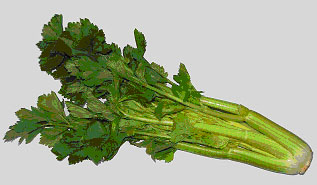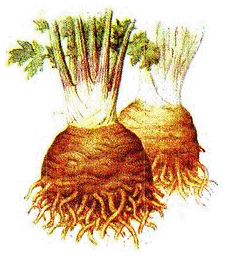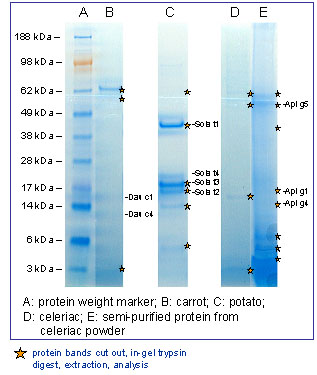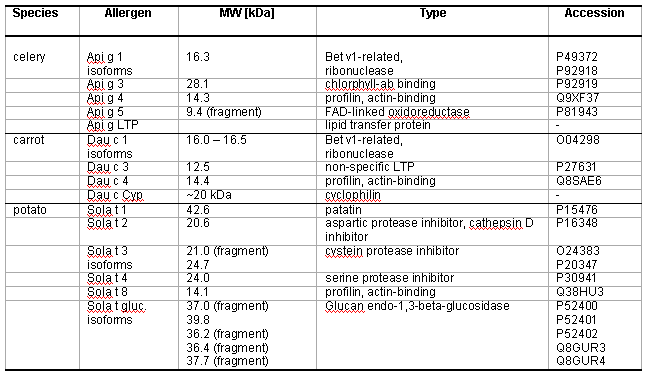Celery (Apium graveolens) root (celeriac) and sticks are consumed as raw or cooked vegetables. Because of its aromatic flavour it is also used as a spice in soups, salads and sausages. Allergy to celery is one of the most frequent food allergies in many European countries. Sensitisation to celery often develops in relation to birch and/or mugwort pollinosis.


The most common symptom is oral allergy syndrome (OAS) as for several other pollen-related food allergies. Cross-reactivity is frequent and termed “birch-mugwort-celery syndrome” or “celery-carrot-mugwort-spice syndrome”. Symptoms are often of the immediate type, ranging from relatively mild reactions to anaphylactic shock. Allergic reactions occur predominantly to raw celery and less frequently to cooked celery. Response to celery spice is comparable to raw celery.
Celery allergens
Five allergens have been characterised in celery, each belonging to different protein families. The heat-labile pollinosis-associated protein (Api g 1) and profilin (Api g 4) are important for pollen-related cross-reactivity, whereas celery LTP (Api g 2) and glycoprotein (Api g 5) are more important in processed foods. The relevance of an allergenic chlorophyll-binding protein (Api g 3) is unclear.
Celery allergens show considerable homologies to proteins from other vegetable sources. The generation of specific antibodies for the detection of celery in ELISA assays has not been successful so far, as cross-reactivity to especially potato and carrot is extensive. Therefore, PCR is the method of choice for the detection of celery in food matrices.
Mass spectrometry-based (MS) proteomic analysis (peptide sequencing) revealed high sequence homologies between proteins in celery, potato, and carrot. Four protein families, containing known major allergens were identified: glycanases, lipid acyl hydrolases, protease inhibitors, and actin-binding profilins. Cross-reacting proteins were identified by immunochemical analysis, cut out from a separation gel and analysed by MS.
See our publication in the Journal of the AOAC International here.

Figure: SDS-PAGE of carrot, potato and celery proteins
Table 1 : Identification of proteins by comparison of mass spectrometric data with protein databases
